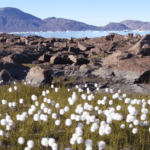In a previous post we talked about the ins and outs of writing a journal article. But once you have that article—some would argue, before you even start writing that article—you need to know what journal you plan to submit to.
This is an important decision. Where you publish not only affects who sees and cites your research, but is a big part of how you’re evaluated by granting agencies, hiring committees, and tenure and promotion committees.
Some people decide where to submit based largely on journal impact factors and the purported prestige of a particular journal. However, many scientists would argue that, unless you’re absolutely sure that your manuscript is a perfect fit for these high-impact journals, this approach is problematic. For one thing, publishing in a high impact factor journal doesn’t guarantee more citations. Additionally, given the high rejection rates at these journals, if you’re working your way down the impact factor list you’ll spend more time reformatting and resubmitting your manuscript than actually getting anything published.
The key is to select a good quality, well-respected journal that fits your research topic and will reach your intended audience, and has an editorial process and publication timeline you’re happy with.
An important initial consideration is manuscript structure. The journal you select doesn’t just determine how you format your reference list—some journals also have different manuscript structures. Nature and Geophysical Research Letters, for example, have strict length limits that require very succinct writing. Nature journals also often require only a brief summary of methods within the paper, with a more detailed outline in a separate section at the end of the article (e.g., Kurz et al. 2008 in Nature). While these papers are ideal for reporting focused and specific research outcomes, they may not be the best outlet for your paper if you have more to talk about.
Over at Dynamic Ecology, Brian McGill argues that journal ‘fit’ is more important than impact factor in determining whether or not your paper will be accepted—and how likely it is to be read after being published. Fit depends in part on what research topic your manuscript focuses on. For example, if you’re studying the effect of tree mortality on snow processes, you’d send a paper about the snow processes to a hydrology journal, whereas a paper examining the trajectory of tree mortality might be better suited for a forestry journal. Given that the focus of your paper may drift as you write it, it can sometimes be helpful to ask colleagues for tips on where your paper might fit.
Journal ‘fit’ can also incorporate the geographic focus of your research. If your research is mainly locally or regionally relevant, a quality local/regional journal makes sense (e.g., Canadian Water Resources Journal). Alternatively, your science may be globally applicable, in which case you’d look for journals that have an international readership.
Say you’ve decided to submit a paper to a hydrology journal that has an international readership, narrowing your search down to 10-15 journals. The next step is to determine your audience. One way to do this is to check your reference list. If you’re consistently citing articles from specific journals, perhaps they’d be a good venue in which to publish your own work. You can also consider specific researchers that you want to reach with your paper.
For example, if you’re focusing on the effects of tree mortality on snow processes, you’d likely want to reach ecohydrologists via the journal Ecohydrology. If you’re writing about snowmelt interactions with groundwater, you might want to reach groundwater hydrologists via the journal Groundwater. Alternatively, if you want to reach a broad cross-section of hydrologists you might choose Hydrological Processes or Journal of Hydrology. Finally, if your work is relevant to a cross-section of disciplines, you may benefit from publishing in a multidisciplinary journal such as F1000 Research or FACETS.
Another consideration that’s becoming more important—particularly given the recent Tri-Council open access policy on publications—is whether or not you want your work to be open access(OA). The Tri-Council statement offers two alternatives: upload your published work to an institutional repository that is freely accessible by anyone (“green” OA), or publish in an open access journal (“gold” OA). It’s up to you to decide which approach you’ll take, which requires some research into the pros and cons of each. For more information on open access take a look at CSP Open and check out CSP’s Guide to Open Access for Researchers.
You may also be interested in a journal’s peer review policy. Given some of the biases inherent in traditional peer review, an increasing number of journals are turning to open peer review. Consider if this something you’d be comfortable participating in. Going back to our hydrology example, Hydrology and Earth System Science (HESS) is a European Geophysical Union (EGU) journal that posts manuscripts online as ‘discussion papers’. These papers are subject to review from two assigned peer reviewers plus any members of the scientific community who wish to add comments. All of these reviews are public, as are the author’s comments in response. Once the paper is revised and found suitable for publication, it’s uploaded to the site as a published article. The most important thing to determine is that the journal you’re submitting to is, in fact, peer-reviewed, and that you fully understand their review process (check their website for info, including ‘instructions to authors’).
Another consideration is the time between submission and publication. This can be an issue if your research results are time-sensitive. A good example is Moore et al.’s letter in Science about Skeena salmon, which was used as evidence in an environmental impact assessment. Journals such as the AGU’s Geophysical Research Letters are known for their quick turnaround time. Note, however, that you have to hold up your end of the bargain by responding to peer reviews within one to two weeks of receiving them, so make sure you have the time to do this.
You don’t have to choose a journal in a vacuum. Check out journal web pages and find out if their description of their content complements your manuscript topic. Get your colleagues’ perspective on which journals might be appropriate—and which to avoid. You can even contact an editor in chief at a journal you’re thinking of submitting to, and ask them if they think your paper (provide a brief summary) would be a good fit.
To recap:
- Consider how you want to structure your paper.
- Choose good journal ‘fit’ over impact factor.
- Define the audience you want to reach.
- Decide on whether you want your work to be open access.
- Consider the journal’s review policies.
- Make note of any time constraints you have for getting your work published.
Adding to this conversation, the LSE Impact Blog recently posted a blog on this topic as well. Remember, you want to publish your research in a reputable journal that reaches the largest audience possible. Choose wisely, and you’ll reap the benefits.




